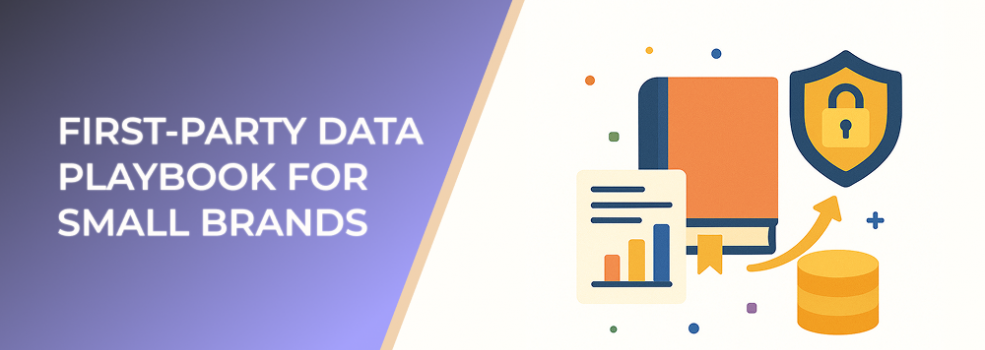The shift away from third-party cookies has pushed businesses of all sizes to take ownership of their data strategies. For small brands, first-party data is no longer optional — it is the most reliable, cost-efficient, and privacy-compliant way to understand audiences and personalize marketing efforts.
Studies show that companies actively using first-party data improve customer retention by up to 30% and see an average 15% boost in conversion rates. This playbook outlines how small brands can collect, organize, and activate first-party data to stay competitive.
What First-Party Data Is
First-party data is information collected directly from users through owned channels such as websites, apps, email forms, and online transactions. Because it comes directly from audience interactions, it is more accurate and compliant with modern privacy standards.
Common sources include:
-
Website analytics
-
Email sign-ups
-
Purchase history
-
Surveys and preference forms
-
Customer support interactions
-
Loyalty programs
Why First-Party Data Matters for Small Brands
1. Higher Accuracy
Since the data originates from real customer behavior, it delivers more reliable insights.
2. long-term cost efficiency
First-party data reduces reliance on expensive third-party audience lists.
3. Improved Personalization
Brands using first-party insights can deliver targeted experiences that increase user satisfaction.
4. Compliance With Global Privacy Standards
With increasing restrictions on third-party cookies, first-party data offers a sustainable solution.
5. Better Ad Optimization
Analytics studies show that campaigns enriched with first-party data see up to 20% higher return on ad spend.
How Small Brands Can Start Collecting First-Party Data
1. Strengthen Website Tracking
Use on-site events to collect behavioral signals such as:
-
Page views
-
Product interactions
-
Scroll depth
-
Abandoned carts
These metrics help identify intent and segment audiences more precisely.
2. Use Email Capture Strategies
Offer value-driven reasons for email sign-ups, such as exclusive content, early access, or discounts.
Brands effectively using email-based first-party data report up to 25% higher repeat purchase rates.
3. Launch Feedback and Preference Forms
Short forms allow users to directly share preferences or challenges. This yields highly actionable data.
4. Implement Loyalty and Rewards Programs
Loyalty programs provide a constant stream of transactional and behavioral insights.
5. Track Post-Purchase Interactions
Order confirmations, support requests, and satisfaction surveys all contribute to a richer understanding of customers.
Organizing First-Party Data
1. Centralize Your Data
Use a single environment to store and analyze user information. Centralization prevents fragmentation and improves segmentation.
2. Ensure Data Cleanliness
Remove duplicate entries, outdated emails, or incomplete records.
Studies show that clean data can improve email deliverability by up to 22%.
3. Build High-Intent Segments
Examples include:
-
Frequent buyers
-
Cart abandoners
-
Category-specific visitors
-
New vs returning customers
These segments allow more precise and efficient marketing.
Activating First-Party Data
1. Personalize Email Journeys
Use data-driven automation for:
-
Welcome flows
-
Abandonment reminders
-
Upsell recommendations
-
Win-back campaigns
2. Improve Ad Targeting
First-party data improves accuracy for custom audiences and helps recover lost conversions.
3. Create Lookalike Segments
Better seed audiences result in more effective models, improving reach and performance.
4. Enhance On-Site Personalization
Tailor product recommendations or content based on previous user behavior.
5. Strengthen Retargeting
Use segmented data for:
-
Mid-funnel nurture
-
High-intent reminders
-
Seasonal promotions
Data-driven retargeting campaigns can reduce acquisition costs by up to 18%.
Useful Statistics
-
Brands using first-party data for personalization see a 20–25% increase in engagement.
-
Transaction-based data improves audience match rates by up to 28%.
-
Clean, validated first-party datasets can boost email performance metrics by more than 15%.
Conclusion
Small brands can achieve significant performance improvements by implementing a structured first-party data strategy. By collecting accurate signals, organizing them effectively, and activating them across marketing channels, brands can secure long-term gains in retention, revenue, and efficiency.

